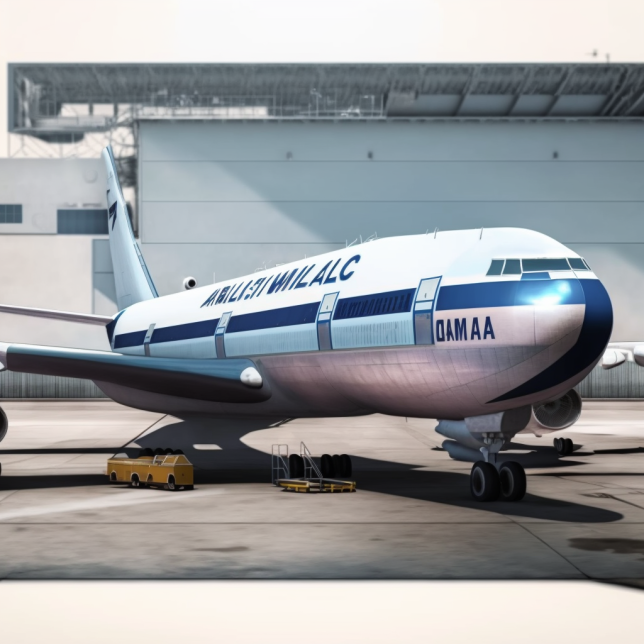The rise of autonomous aircraft — from delivery drones to pilotless air taxis — marks a turning point in aviation history. These advancements are not just technological; they bring about a paradigm shift in aviation law, forcing regulators, insurers, and operators to rethink the rules of the sky.
We explore how aviation law is evolving to meet the challenges of automation, focusing on safety standards, liability, airspace rights, and data protection in the age of artificial intelligence.
🚀 From Human Pilots to Machine Intelligence: A Legal Revolution
Autonomous aviation doesn’t merely automate flight — it redefines it. Traditional air law is based on the assumption that a licensed human pilot is always in control. That’s no longer the case.
Now, national aviation authorities like the FAA (U.S.) and EASA (EU) must develop new legal frameworks to oversee:
- Pilotless commercial aircraft
- UAV traffic integration
- Urban air mobility (e.g., air taxis)
- AI decision-making during flight emergencies
What’s emerging is a legal environment that must manage software-driven aircraft, often operating beyond visual line of sight (BVLOS) or without direct human input.
⚖️ Regulatory Challenges: Can Law Keep Up With the Tech?
1. Safety Certification for AI-Controlled Aircraft
How do you certify that an aircraft flown by algorithms is safe?
Unlike human pilots, autonomous aircraft systems must be tested through:
- AI behavior validation in unpredictable environments
- Redundancy protocols for system failure
- Real-time decision-making standards
Regulators are working to define what constitutes “airworthiness” when AI is at the controls.
2. Flight Rule Integration
Autonomous aircraft must coexist with traditional planes. This demands:
- Segregated or integrated airspace management systems
- Remote Identification protocols
- Standards for “Detect and Avoid” technologies
Efforts like U-space (EU) and UTM (Unmanned Traffic Management, U.S.) are pioneering regulatory paths for this coexistence.
📦 Drones: A Legal Test Case for Autonomy
Drones have already forced legal systems to evolve — rapidly.
- Commercial drones are regulated under rules like FAA’s Part 107, requiring pilot certification and compliance with airspace restrictions.
- Privacy, trespass, and nuisance laws are being reinterpreted for drone use in populated areas.
- New laws address drone delivery corridors, low-altitude navigation, and even noise limits in urban drone operations.
The evolution of drone law shows how real-world application often outpaces regulation — and how quickly governments must adapt.
🛡️ Who’s to Blame? Liability in an Autonomous Sky
Aviation law traditionally places liability on the pilot and operator. But when an AI system causes an accident, who’s at fault?
Key liability questions include:
- Is the manufacturer responsible for algorithmic errors?
- What if a software update introduces a bug post-certification?
- Should operators be held accountable for system misuse?
Legal experts are exploring shared or tiered liability models, with expanded roles for product liability, software compliance, and system monitoring.
Meanwhile, insurers are developing new policies for autonomous operations, including first-party and third-party cyber risk coverage.
🔐 Data Security and Privacy: The New Legal Battleground
Autonomous aviation relies on vast data flows — for navigation, communication, weather, and maintenance. That raises urgent legal issues:
- Cybersecurity regulations to protect against hijacking, spoofing, and data breaches
- Passenger privacy laws, especially for autonomous taxis and surveillance-capable UAVs
- Data ownership: Who controls the telemetry, video, or biometric data gathered during flight?
Emerging aviation data laws must comply with national cybersecurity frameworks (e.g., GDPR, CISA, NIS2) and address real-time risk mitigation for autonomous systems.
🌐 Global Harmonization: A Legal Imperative
Autonomous aircraft don’t respect borders — and neither should their regulation.
ICAO, JARUS, and other international bodies are spearheading efforts to:
- Align certification standards for AI systems
- Develop model rules for UAV integration
- Promote shared ethical and security principles for autonomy
Without global coordination, legal fragmentation could stifle innovation and jeopardize cross-border safety.
🧭 Looking Ahead: Rethinking the Foundations of Air Law
Aviation law must move beyond simply adapting old rules to fit new tech. The rise of autonomy demands foundational change, including:
- New definitions of pilot, operator, and airworthiness
- Legal frameworks for human-AI shared control
- Ethical oversight for life-critical decision-making algorithms
- Smart contract integration for leasing and insurance in autonomous contexts
The legal system must evolve as dynamically as the aircraft it governs.
✅ Summary: Legal Airspace in the Age of Autonomy
The autonomous aviation era isn’t just a technological revolution — it’s a legal one. The challenges are complex, but the trajectory is clear:
- 🌍 International collaboration is essential
- 🔐 Data and liability laws are evolving fast
- 🛫 Regulators must redefine airworthiness and safety
- ⚖️ Legal theory must adapt to algorithmic control and machine learning
In short, the future of flight depends not just on code or hardware — but on law.

